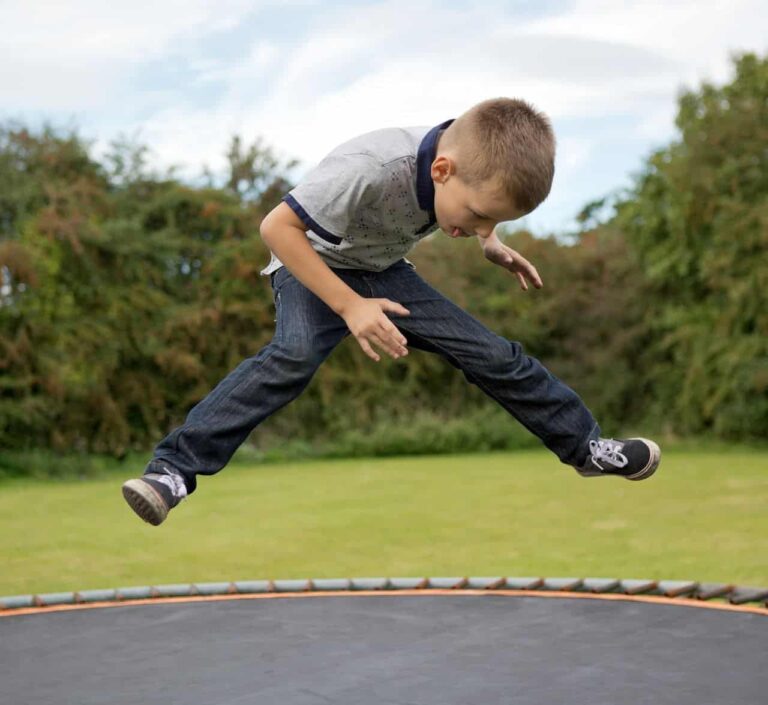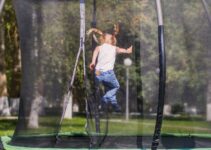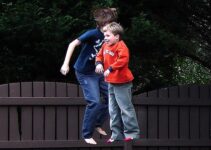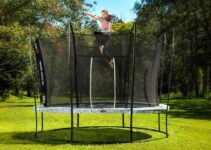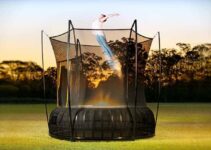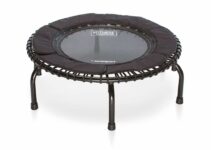Giving your kids the best chance in sports and fitness
Every parent wants to give their child the best start in life and ensure that they’re kept safe and healthy. However, pushing children into intense exercise at too early an age can have negative effects and we are all slightly uncomfortable with “pushy parents”.
In this article we’re going to share the best way to develop your child’s sport performance and health without pushing them too hard or
What is GPP? Why is it Important?
GPP stands for general physical preparation (or the “general preparation phase” of training).
It is all about developing general athletic qualities in new trainees.
This is appropriate for children or those new to sports. In simple terms, sport performance is like a pyramid: the wider the foundation of general athleticism, the higher you can go.
Children are a special case when it comes to GPP. While many adults are limited in terms of their genetic potential for strength, power and other athletic qualities, these long-term characteristics are heavily influenced by training in youth. These characteristics are “plastic” in children: if you expose your child to a variety of sports, their long-term genetic potential can be improved drastically,.
GPP can contribute to your child’s long-term sporting potential in many ways. First, it develops work capacity – the amount of exercise that can be performed without sustaining long-term fatigue or overtraining. It can also develop greater body awareness that is important in many sports, as well as reducing long-term injury risks.
Making the Most of GPP
GPP is usually the job of an experienced coach, but if you’re going to give your child the best opportunities for sport, health and fitness, you need to know what pitfalls to avoid and how to best structure their sport training.
Progressive Overload: When is Exercise appropriate?
This is a contentious question with a relatively simple answer: different forms of exercise are appropriate at different times. You wouldn’t enroll your toddler in sprinting, but they can perform many feats of children’s soft gymnastics to improve their balance and walking abilities. Similarly, you wouldn’t expect a young child (4-9 years) to perform heavy barbell strengthening movements – but gymnastics and trampolining can be a great way to develop strength, power and resilience.
Gently increase the challenge associated with your child’s sports and exercise in line with their age. Work from the simplest, low-load movements (like walking and rolling, found in children’s soft gymnastics classes) to more complicated, challenging movements like gymnastic skills, sprinting, and trampolining movements6.
Things to Avoid
Here is a list of simple pitfalls to watch out for when looking to give your child a head-start in life:
- Don’t go too fast: children need to progress slowly, so be sure to go at their pace and consult sports coaches at every step.
- Stick to the basics: children don’t need to learn extremely complicated and specific movements – master the basics like walking, running, jumping, and other body-control exercises.
- Don’t push too much: if children don’t want to do something, being commanded is a great way to turn them off from sports and exercise altogether. You know how to raise your kids, but be sure to practice gentle encouragement.
Sport Psychology and Special Populations
Participating in sports is not only a great way to improve your child’s personal athletic abilities, but also develop social skills and confidence. Sports provide a great framework for developing confidence: they provide children with defined goals and a reliable process by which to achieve them. In practice, confidence is cumulative: the more you do, the more you believe you can do. Sports provide a great example of how hard work, effective planning, and attention to detail can make goals possible and provide a sense of self-worth and self-belief that will carry over to other areas of life.
Sports are also a great source of calm and a “stress release” for children. Trampolining is one of the less combative of sports, but provides a great mechanism for dealing with anxieties, frustrations, and general stress. Trampolining is accessible for all abilities (the learning curve is relatively gradual) and provides an instant outlet for stress. Spend a while bouncing and see how much happier you feel.
If you’re caring for SEN children, you already know the extra challenges that sports can present. Many team sports involve highly-demanding or confrontational social situations that may not be beneficial to all children. By contrast, trampolining provides an entertaining and socially-inclusive sport where children are given space to practice individually, but still encouraged to form teams and other social support structures – both of which can improve competence and self-esteem.
Preparing Your Child for Greatness: Why Choose Trampolining?
Trampolining is a great sport in its own right, but there are 4 key reasons you should use it for your child’s athletic preparation: joint health, lower body preparation, co-ordination, and adherence.
Reason #1: Improve and Maintain Joint Health
One of the best effects of extensive GPP is the ability to condition the joint and improve resistance to injury. If you want to keep your children healthy and protect them from injury, expose them to sports that teach movement. Trampolining is a great example of this – the trampoline applies gentle stress that improves joint health and doesn’t impact the joints like running.
Reason #2: Boost Long-Term Strength and Power
Trampolining is also a great way to improve the strength and power of the lower body in preparation for other sports. You might think of sprinting when we say power, but developing these characteristics through trampolining is safe and effective. If you want your child to have the option to make waves in a sport requiring strength and power, trampolining is a great place to start.
Reason #3: Develop Co-Ordination and Balance
The unstable floor of the trampoline and the technical requirements of the movements are a great way of developing basic balance and co-ordination. As with strengthening and joint health, the idea here is to challenge your child’s abilities so that their body and mind can develop in response. A mild challenge or stress in the short-term brings on long-term adaptations that carries over to all other sports.
Reason #4: Adherence
As any parent knows, getting a child to commit to scheduled, structured exercise (or anything else, for that matter) is unbelievably difficult. One of the biggest perks of preparing your child through the use of trampolining is that trampolining is fun! If you’re looking for a form of GPP that your child actually enjoys, instead of battling to take them anywhere, trampolining is a great choice.
How to Make Trampolining Work for you and Your Kids
Trampolining is a great choice for GPP, but making it work for your child and their athletic career is a bit more delicate. We’re going to discuss the key ways that you can use trampolining to improve health, fitness, and long-term performance.
Of course the first step is to get a trampoline. For that, you can take a look at our list of the best brands on the market today.
1. Lower Body Conditioning
Why is it important?
Perhaps the most widely-applicable benefit of trampolining, the development of strength, power, and integrity through the lower body should be one of your main concerns. Almost every sport relies on effective power through the large muscles of the legs and hips, from rugby and sprinting to dance and gymnastics.
Key Exercises for Young Athletes
Foundational movements are the most basic exercises that should be used at the very start of training, whether the athlete is a child or an inexperienced adult. In trampolining, this involves basic movements that may be performed on the floor, but with the added instability and power-developing benefits of the responsive floor.
Deck Squats

These are a great exercise when performed on a regular floor, but are easier when performed on a trampoline, and begin to develop basic strength through the core and legs. (These are also great preparation for pistol squats)
Straight Jumps

Straight jumps are a simple exercise that develop connective tissue strength and resilience in the ankles, knees, and hips.
Single-Legged Bounces

Bouncing on one leg is a great way to begin training and conditioning the lower body for further exercise, as well as developing co-ordination and balance.
2. Core Strength and Midline Stability
Trampolining is a form of gymnastics and has all the positive health benefits this confers. The effects on the core and lower back contribute to life-long health and improved posture, as well as maximum performance in other sports.
Why is it important?
Core strength has 3 main functions: it prevents injury, improves force transfer, and is involved in the production of force in every direction. A strong, stable core improves the transition of force from the legs (reducing “leaks” of efficiency) and rotation of the core and hips is key to power in sports like baseball or combat sports.
Preventing spinal injury is perhaps the main purpose of core work for the young athlete, however. Strength in the abdominal muscles, lower back, and glutes are all crucial for stabilising the spine during movement – one of the best ways to prevent disc injuries and other structural damage to the lower back.
Key Exercises for Young Athletes
Tuck Jump
https://www.youtube.com/watch?v=LRJcVZ9AYjI
Like a sitting or hanging tuck, this movement is a basic abdominal exercise for further gymnastic movements. The tuck also strengthens the deep muscles of the pelvis and improves basic posture.
Seat Drop

This fun, simple movement is a great way to start building core strength for the L-sit, which USA gymnastics coach Chris Sommers considers the most important core exercise. The seat drop is also great for general strength: after a few repetitions with good positions, you’ll feel the burn through your abs and hips.
Balance and Co-Ordination
Trampolines are fantastic for their ability to challenge balance and co-ordination. This is a great way to develop basic athletic traits in young athletes without too much loading or dangerous movements. This is one of our favourite reasons to use trampolining for GPP, as almost any movement on an unstable surface will contribute to developing balance and co-ordination.
One of the most important reasons to challenge balance and co-ordination is to develop seldom-used patterns of movement that are often associated with injury. Strengthening muscles and joints in these positions is a great way to develop resilience and comfort in a wide variety of unusual positions that will be useful for many other sports.
Key Exercises for Young Athletes
Single-Legged Straight Jump: Much like the straight jump mentioned above, the single-legged variation increases the challenge on both the strength of the legs and the co-ordination necessary to keep good positions. This requires excellent balance and should be practiced once the child has shown balance and stability in both the single-legged hop and the regular straight jumps.
Figure Skater Squat

This is a great movement to develop from deck squats and single legged bounces. Especially when performed on a trampoline, this movement challenges single-legged movement and requires the development of great balance and stability on a single leg. Alternate legs to develop overall balance, mobility, and co-ordination.
Rotating Straight Jump: Much like the regular straight jump, this exercise is a great way to develop key skills, but with the added rotation it becomes much more challenging on balance and co-ordination.
While in the air during a straight jump, simply rotate while keeping tight body position. Rotation in the air can be any angle, depending on ability, and mixing these rotations on the fly is a great way to keep kids attentive and adaptable.
Complexes: Sequences for Improving Co-Ordination: One of the best, simplest ways of developing balance and co-ordination is to incorporate many exercises in sequence, each of which has different demands on balance, co-ordination and fitness.
Combining exercises that challenge spatial awareness, synchronised movement, balance, movement fluency, and challenges of rhythm will produce great results and transfer well to sport movements. One example that can be performed on a trampoline is as follows:
- Deck Squat
- Technical Get-up
- Single-Legged Straight Jump
- 180-degree rotating Straight Jump
- Seat Drop
- 180-degree rotating Straight Jump
- Tuck Jump
Closing Remarks
We’ve already covered some of the basics of trampolining in a previous article. However, today we’ve looked in-depth at what makes trampolining a great choice to include in your child’s sports education and physical development. GPP requires walking a fine line between positive encouragement and overloading a child, but trampolining is a great way to develop some of the most important and beneficial sporting characteristics for the long-term
If you’re looking to develop a basis of physical fitness or give your child the best opportunities in sports and life, trampolining is a great choice. Include this type of training as a fun, novel alternative to traditional children’s sports – something we think will be well-received!

